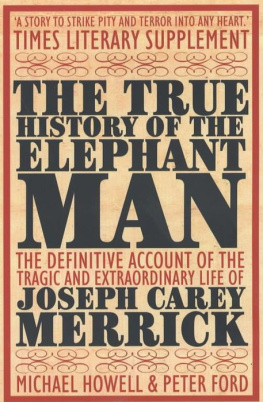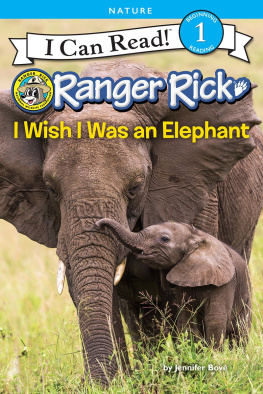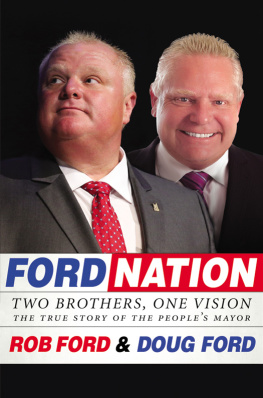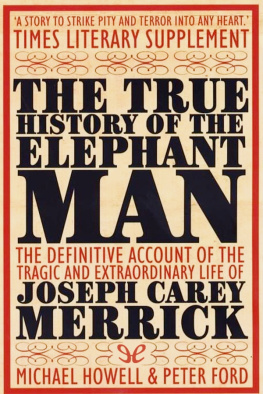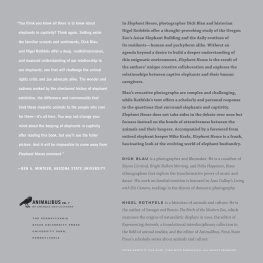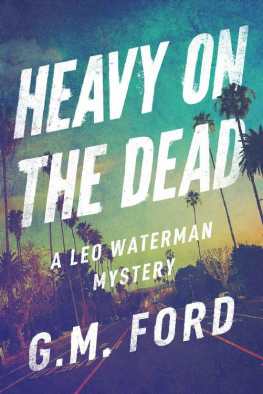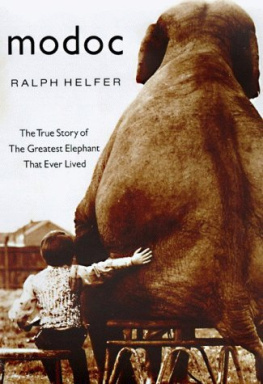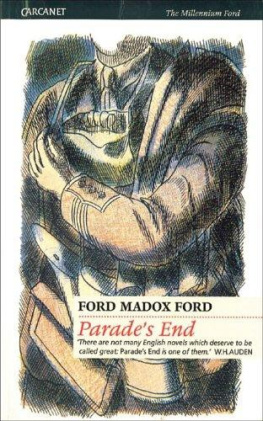Peter Ford - The True History of the Elephant Man
Here you can read online Peter Ford - The True History of the Elephant Man full text of the book (entire story) in english for free. Download pdf and epub, get meaning, cover and reviews about this ebook. year: 2011, publisher: Allison & Busby, genre: Detective and thriller. Description of the work, (preface) as well as reviews are available. Best literature library LitArk.com created for fans of good reading and offers a wide selection of genres:
Romance novel
Science fiction
Adventure
Detective
Science
History
Home and family
Prose
Art
Politics
Computer
Non-fiction
Religion
Business
Children
Humor
Choose a favorite category and find really read worthwhile books. Enjoy immersion in the world of imagination, feel the emotions of the characters or learn something new for yourself, make an fascinating discovery.
- Book:The True History of the Elephant Man
- Author:
- Publisher:Allison & Busby
- Genre:
- Year:2011
- Rating:3 / 5
- Favourites:Add to favourites
- Your mark:
- 60
- 1
- 2
- 3
- 4
- 5
The True History of the Elephant Man: summary, description and annotation
We offer to read an annotation, description, summary or preface (depends on what the author of the book "The True History of the Elephant Man" wrote himself). If you haven't found the necessary information about the book — write in the comments, we will try to find it.
The True History of the Elephant Man — read online for free the complete book (whole text) full work
Below is the text of the book, divided by pages. System saving the place of the last page read, allows you to conveniently read the book "The True History of the Elephant Man" online for free, without having to search again every time where you left off. Put a bookmark, and you can go to the page where you finished reading at any time.
Font size:
Interval:
Bookmark:
The first edition of TheTrueHistoryoftheElephantMan was published in the spring of 1980. The previous autumn, while the book was in the press, Bernard Pomerances play, TheElephantMan (until then known mainly from art theatre productions), was presented on Broadway. There it met with considerable popular success and in due course a Tony award, besides giving David Bowie his first serious stage role when he took over the lead. In the summer of 1980, the play began a long-running production at the National Theatre in London, and that autumn David Lynchs film, TheElephantMan, was released. There were few evident connections in the backgrounds to these events. It seemed more to be a synchronizing of several lines of coincidence.
The extraordinary concentration of interest in the life of Joseph Carey Merrick that was caused by these treatments, imaginative and documentary, had two main effects. First, it established the story itself as an invariably moving myth in popular consciousness. Secondly, it led, directly and indirectly, to further details of Merricks life emerging from obscurity, sometimes from unexpected sources.
So far as the facts in the case are concerned, Dr Howell and I had called our book a true history. Even if that, too, carried a mythic resonance in the style, say, of the balladeers of earlier times, it was disconcerting to find how many of our assumptions and inferences came to need reappraisal and adjustment. We had striven to include in our account no statements beyond those that could be justified from documentary record. Yet interpretation may only proceed in line with the facts as known. A shifting pattern of facts, in any context, becomes a part of the process of understanding events.
As for the mythic dimension and here it is essential not to fall into the common error of calling myth perse untrue it has resulted in the story of the Elephant Man acquiring a whole cultural history in its own right. It was a process that may be said to have begun in 1923 when Sir Frederick Trevess TheElephantManandOtherReminiscences was published, and to have received a boost along the way in 1971 with the publication of Ashley Montagus TheElephantMan:AStudyinHumanDignity. Its manifestations have been remarkably varied.
John Hinkley, for instance, the schizophrenic young man who in 1981 made an attempt with a firearm on the life of President Reagan, was found to have written poems that contained the cryptic thought: Perhaps the Elephant Man would understand my dilemma its all a matter of face to face communication. A cycle of poems, WordsforElephantMan, was published in 1983 by the American poet, Kenneth Sherman. In 1988, Michael Cavalli, an amateur composer, spent his life savings on hiring an orchestra and the Central Hall, Westminster, to hear a performance of his SymphonicPoem, also based on the Elephant Mans life. The previous year the singer and performer, Michael Jackson, had been reported to have made the London Hospital an offer of $500,000, later expanded to $1,000,000, if they would sell him Merricks skeleton.
This episode in particular provoked a good deal of ill-informed speculation in the British press for a day or two. It has subsequently been claimed that Jacksons bids were no more than a publicity stunt. Nevertheless his visits to view the skeleton, and his obsession, seem to have been real enough. Yet if the episode was nothing more than a prank to do with image making, then clearly it misfired. The impression created was of a bizarre spectacle, as if a demonic emissary were attempting, almost a century on, to reclaim Merricks bones for show business.
The untimely death of Michael Howell in 1986 deprived me of a friend and colleague, and of many continuing opportunities for entertaining and wondering discussion. We did, of course, work together on the revised text for the 1983 edition, but its print numbers were relatively restricted and it was the original 1980 trade edition that continued to be most widely available during the rest of the decade. In preparing what is therefore the third edition for publication, I have been conscious of the absence of Michaels shrewd asides and wise counsel, though I hope he would have approved of the result. It chronicles and attempts to balance all the facts in Merricks life as they are presently known. Since it was Michael Howell who, some time in the late 1960s, set out on the trail of the Elephant Man during his precious afternoons off from a demanding Black Country practice, I feel it appropriate that it should be dedicated both to his widow and his own memory.
Considering the wealth of fresh information that came to the surface during the 1980s, it would perhaps be rash to speculate that we now know most of what we are ever likely to know of Joseph Merrick in a documentary sense. On the other hand, it is clear that the history of his story is far from over and may, indeed, remain open-ended indefinitely. In certain of its aspects, it seems firmly set in the Victorian matrix of its origins, for even the elements of fairy tale and melodrama are naturally there in the known details and have no need of embroidering. In other aspects, its time-transcending qualities possess an influence to teach, to change attitudes towards the disabled and malformed, perhaps even to help to heal the psychic traumas that must always be a hidden component in physical disability. During fifteen years of living with Joseph Merricks story, and never ceasing to be moved by it, I have inevitably had my fanciful moments of feeling that is what he would wish.
This book has evolved into its present state through three editions; its list of acknowledgements is therefore long. The quotation from the journal kept by Lady Geraldine Somerset for the Duchess of Cambridge is reproduced by gracious permission of Her Majesty the Queen. It was Georgina Battiscombe, the biographer of Queen Alexandra, who drew attention to this in the Royal Archives, Windsor Castle Library, and Sir Robin Mackworth-Young, the then librarian, supplied a copy of the text.
The London Hospital kindly gave permission to quote from the Minutes of the London Hospital House Committee. Professor Gordon Seward, CBE, of the London Hospital Medical College, has continued to be unstinting in the way he has given encouragement and time in checking and offering criticisms of the text, both of the original draft and of the rewriting made necessary by developments in the hypothetical medical picture during the 1980s. J. P. Entract, former librarian of the London Hospital Medical College, was patient and more than helpful over a long period, as was Percy Nunn, the former assistant curator of the college museum. The latters son, David Nunn, has, as his successor as assistant curator, happily continued this tradition and maintained contact in mutual exchanges of fresh information. Margaret Robertson took photographs in the London Hospital Medical College Museum, and Julia Short searched the hospitals photographic archives for items of possible relevance.
There are many others to whom a special debt is owed, for kindness in general and for guidance in the direction of much particular information. These include: W. J. Barlow; Mrs Nellie Batchelor, who was kind enough to recount all she could remember of her uncle Walter Steels recollections of meeting Merrick; David Braithwaite; Dr K. T. Brown; Colonel Rixon Bucknell, who helped to clarify the likely train ferry routes from the Continent to Harwich in 1886; Richard Carr-Gomm; G. W. Essex; William Dooley (Benson Dulay), who passed on information about his uncle Sam Ropers fair as well as family anecdotes originally told by his father Bertram Dooley of the time when he travelled with Merrick on the fairground circuits, and who made family photographs available; Mrs Marion Duck, who corresponded about her and Tom Normans Noakes forebears and origins; Colin Eaton, who generously shared his researches in the Northamptonshire Records Office, drawing attention to the existence there of Lady Louisa Knightleys diaries and acting as an initial contact with the families of Bertram Dooley and Walter Steel; Dr Ron Finch, who, by his painstaking photographic skills, made some excellent prints out of apparently unpromising archive material, work later supplemented by Denis Clark and by Les Curtis of Chilton Colour Laboratories, Sudbury; Desmond Flower; E. R. Frizelle; John Garratt; Robert Geary; the Great Eastern Railway Society, for help with amplifying earlier research, and whose members, L. D. Brooks and J. Sweszkowski, located some rare picture material; Peter Honri; Mrs Leila Hoskins, who provided information about her aunt, Mrs Leila Maturin (ne Leila Scot Skirving), and a copy of the pamphlet reproduced here as Appendix Two, and who presented the authors with the only known surviving example of Merricks correspondence; Winston F. Hughes, who offered an eyewitness description of Merricks specially built bed; Mrs Margaret Hunter, who sent details of the book inscribed by Merrick for his cousin; Pat Kingston, who, with the help of Janice Tipping, typed the successive drafts of the first edition and handled much of the correspondence in the early stages; Mrs Kenneth Lindy, daughter of Dr Tuckett, who spoke of her father (and of his disappointment at Trevess failure to record his role in his version of the story) provided prints of the Elephant Man that had been among his papers; the staff and facilities of the London Library; Michelle Merrick, whose interest in and diligent researches into the Merrick family history have uncovered further details of value; the descendants of Tom Norman, among whom Tom Norman Jnr originally made his fathers unpublished memoirs available, while Arthur Van Norman helped to round out details of the later days of the Silver Kings career and George Barnum Norman kindly presented a copy of the published edition of the memoirs, including his additions, which also threw some new light on the story (and additionally made it at last possible to reconstruct the most probable sequence of events in Merricks travels with the showmen); Michael Pointon; Nicholas Reed, who kindly allowed access to Trevess autographed manuscript of The Elephant Man, which was then in his possession, and to a collection of Trevess correspondence; W. H. Steel; Dr C. E. Taylor, possessor of the chair that his grandfather, William Taylor, adapted for Merricks use; Dr Kate Thompson, former archivist of the Leicester Museum, and the staff of the Leicester Museum and Library; the descendants of Sam Torr, and especially Mrs Harry Heatherley (Patricia Torr), Mrs Hilda Metcalfe and Roy Torr, who made their collections of cuttings and family memorabilia fully available; and Frederick Treves, great-nephew of Sir Frederick Treves, who gave help and showed interest from a very early stage of the search for the Elephant Man.
Font size:
Interval:
Bookmark:
Similar books «The True History of the Elephant Man»
Look at similar books to The True History of the Elephant Man. We have selected literature similar in name and meaning in the hope of providing readers with more options to find new, interesting, not yet read works.
Discussion, reviews of the book The True History of the Elephant Man and just readers' own opinions. Leave your comments, write what you think about the work, its meaning or the main characters. Specify what exactly you liked and what you didn't like, and why you think so.

